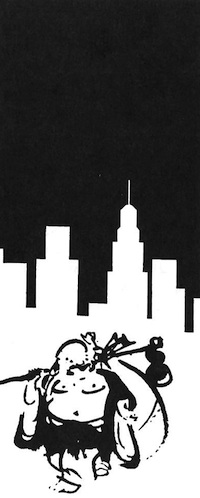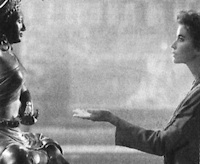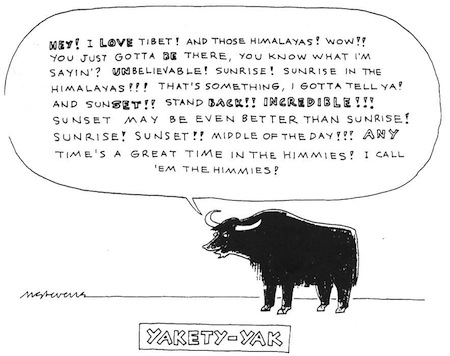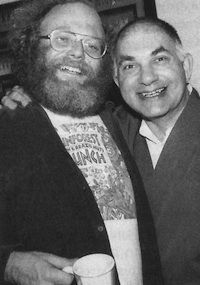Gen Sun Tzu at the Allied Front

A Chinese text on military strategy written 2,500 years ago for the Chinese kingdom of Wu is now an indispensable element of U.S. Marine Corps modern warfare. The Corps’ commandant, General Alfred Gray, has made The Art of War, by General Sun Tzu, required reading for his men. Shambhala Publications, Inc., recently shipped 10,000 copies of the audiotape to the marines, and the book was a reported favorite among commanders and frontline marines during the Kuwait liberation.
Sun Tzu won his General rank by demonstrating he could make his skeptical king’s 180 concubines perform a close order drill. His master plan advocated the assessment of five key points in preparation for military action—the Way, the weather, the terrain, military leadership, and strict discipline. According to translator Thomas Cleary, the text stresses “invincibility, victory without battle, and unassailable strength through understanding of the physics, politics and psychology of conflict.” The book, derived from Taoist philosophy, emphasizes speed and efficiency while opposing prolonged conflict.
In the late 1970s, retired Air Force colonel John “Thirty Second” Boyd (nicknamed for his lightning fast exploits as an ace pilot in Korea) created his own slide show on Sun Tzu’s philosophy. General Gray, then an obscure marine planning officer, heard Boyd speak and felt compelled to study the original text.
Upon his promotion to marine corps commandant three years ago, Gray immediately ordered FMFM-l—the basic fighting manual for officers, rewritten to incorporate Sun Tzu’s more subtle tactical approaches. The traditional Marine Corps doctrine, for example, teaches “wear down the enemy’s strength.” Sun Tzu counters “If the enemy has occupied precipitous heights before you, don’t follow him, but retreat and try to entice him away … to overcome another’s armies without fighting is the highest of skills.”
“I expect every officer to read—and re-read—this book, understand it, and take its message to heart,” Gray prefaced the rewritten versions sent to every marine officer’s home.
A Navy Chaplain on duty in Saudi Arabia, Lt. Cmdr. Joe Matosh, kept well-thumbed paperbacks of Sun Tzu’s text in the back of his pickup truck. “That way,” the chaplain explained, “when one of the boys comes for advice this helps me understand where he’s at.”
Selling Samsara

Television commercials for Samsara perfume present a beautiful model entering a temple in search of the same “sense of serenity” offered by the newest product from Paris-based House of Guerlain. The woman approaches a bronze deity with, miraculously, a bottle of Samsara in place of the Buddha’s traditional begging bowl. The bronze Master raises his right hand in the ‘threatening mudra‘ with the pointer and pinkie finger straight upward and the middle and ring fingers touching the palm. Oddly enough this mudra is used traditionally to kill perverters of the Dharma—or the truth.
The extravagant scent—offered at $205 an ounce—was conceived, created and developed in France by Monsieur Guerlain himself.
In promotional brochures, its creator calls Samsara “a name that signifies ‘the infinite cycle of births and rebirths’.” What Guerlain doesn’t say is that it also signifies tremendous, unending suffering, a hell realm of ignorance, greed and fear.
To a Guerlain public relations consultant “the name suggests simplicity because of the way it sounds in various dialects. It has so many nuances.
“The main attraction of the name was onomatopoeic,” adds the consultant. “It was soft and oriental and could be pronounced all over the world. Samsara is a wonder word carefully chosen by our market researchers. “

Eat a Cookie, Save a Tree

Vermont’s Ben and Jerry’s Ice Cream and New York City’s Greyston Bakery have launched an international project that combines the social action of engaged Buddhism and capitalism at its most responsible. Their effort will simultaneously save the Brazilian rain forest and help the homeless of Yonkers.
Ben and Jerry’s has built its reputation on irresistible natural ice cream and social responsibility. Its subsidiary, Consumer Products, Inc. (CPI) supports cooperatives that harvest Brazil nuts from trees that would otherwise face deforestation.
Launched in 1982, as an income generator for Bernard Tetsugen Glassman’s Zen Community in Yonkers, Greyston Bakery trains and employs homeless people to prepare their award-winning cheesecake and other gourmet delicacies.
The two enterprises, sharing a global vision and a sweet-tooth orientation, have now teamed up to produce the “Rainforest Crunch Chocolate Chip Cookie.”
“We want to show people that you can do well at business while doing good work in the community,” says Ben and Jerry’s President, Fred “Chico” Lager.
“Our relationship with Greyston and their work with the homeless is a good exampie,” Lager adds. “We’re always looking for opportunities to integrate positive social change into our day-to-day business operations. ”
Or as Glassman suggests, “Eat a cookie, save a tree. It’s a highly intensive social action.”